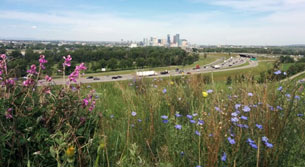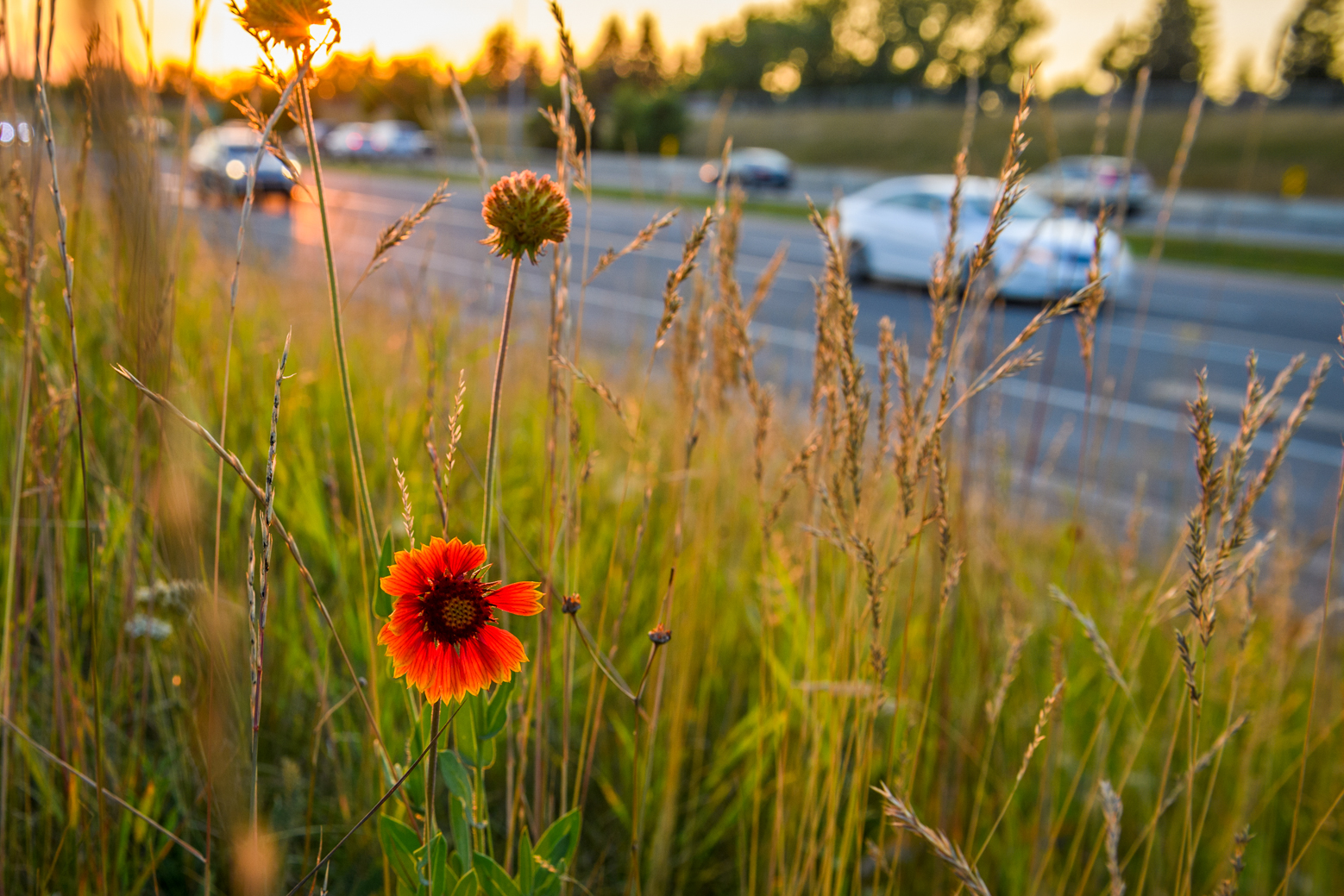Habitat restoration
Habitat restoration is simply reintroducing native plants and natural landscapes. This process helps improve biodiversity, supports local wildlife, and creates sustainable environments that are more resilient to climate change. The goal is to restore and maintain healthy ecosystems, making Calgary's green spaces more enjoyable for residents while preserving the city's natural heritage for future generations.
These efforts also hope to reduce long-term maintenance costs, while providing Calgarians with beautiful, diverse spaces for recreation and relaxation.
Our goal is to restore 20% of open spaces by 2025—making these projects essential for preserving Calgary’s natural heritage for future generations.
Why is habitat restoration important?
Habitat restoration:
- works with nature—not against it.
- creates sustainable landscapes that help support plant, animal and insect life.
- makes our parks and green spaces more resilient to climate change and extreme weather events.
- increases the beauty and diversity of Calgary’s landscapes.
- promotes mental health and relaxation by increasing access to nature.
- provides more diverse recreational opportunities.
- reduces long-term maintenance costs including mowing, fertilizing, applying pesticides, and irrigating.

Native vegetation such as vetch, blue flax and a variety of grasses grow in Calgary.

Frequently Asked Questions
How are habitat restoration sites selected?
We consider several factors, including:
- existing health of the park;
- public safety;
- potential to enhance wildlife habitat and the types present;
- site location within the network of Calgary’s and the region’s green spaces;
- potential impacts to park users;
- utilities and neighbouring residences; and,
- maintenance costs.
How will this affect my community park?
Some habitat restoration projects allow native grasses to grow without being cut. Others may change the types of plants or landscape elements, such as restoring a wetland. The simpler habitat restoration projects are called naturalization—meaning we might remove non-native or invasive plants and then replant native species in their place.
Before we begin any work, we’ll always consider impact to park users. Parks will send information to communities by various means including through community associations and Councillors’ Offices.
We ask you respect any area closures: Restored sites are very sensitive to foot traffic while the vegetation establishes. Thanks for helping us grow!
How long will restoration take?
Restoration takes time. A project can take three or more years to implement. It can take several years after that to reach the full benefits of the restored area. By investing in our parks and green spaces now, we are helping to ensure these spaces remain healthy so that they continue to be enjoyed in the future by Calgarians, and the wildlife that call our city home.
How can I get involved?
If you are interested in working with us to naturalize a public space, see the Steps to naturalization pamphlet and contact 311.
Bring habitat restoration to your own backyard. Learn tips for backyard naturalization.

